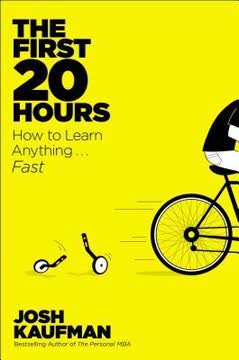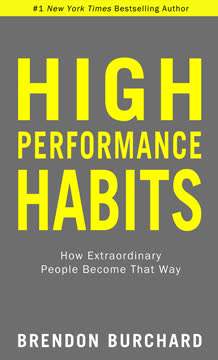Key Takeaways
1. Leverage the unconscious mind to influence consumer behavior
Ninety-five percent of our thoughts, emotions, and learning occur without our conscious awareness, according to Harvard marketing professor and author Gerald Zaltman.
Subconscious influence. The vast majority of consumer decisions are driven by unconscious processes. Marketers must focus on appealing to emotions and unconscious needs rather than relying solely on rational arguments. This involves using subtle cues, priming techniques, and sensory stimuli to influence behavior without conscious awareness.
Neuroimaging insights. Brain scanning technologies like fMRI have revealed how the brain responds to marketing stimuli. For example, strong brands activate areas associated with positive emotions and rewards, while weak brands trigger negative emotional responses. Understanding these neural patterns can help marketers create more effective campaigns that resonate on a deeper level with consumers.
Key areas to target:
- Emotional associations
- Sensory experiences
- Unconscious biases
- Instinctive responses
2. Appeal to multiple senses for stronger brand impact
Brands that appeal to multiple senses will be more successful than brands that focus on only one or two.
Multisensory marketing. Engaging multiple senses creates a more immersive and memorable brand experience. This approach taps into the brain's ability to form stronger neural connections when multiple senses are stimulated simultaneously. Successful brands like Singapore Airlines have mastered this by creating consistent sensory experiences across all touchpoints.
Sensory branding elements. Marketers should consider how their brand can be expressed through sight, sound, smell, taste, and touch. This could include developing signature scents, custom music, unique textures, or distinctive visual elements. The goal is to create a cohesive sensory identity that reinforces the brand's personality and values.
Sensory branding checklist:
- Visual: Logo, colors, typography
- Auditory: Music, voice, sound effects
- Olfactory: Product scents, ambient fragrances
- Gustatory: Product flavors, branded food/drink
- Tactile: Product textures, packaging materials
3. Create powerful brand associations through consistency and emotion
Neurons that fire together wire together.
Neural connections. Consistent brand experiences create strong neural pathways in consumers' brains. Over time, these connections become automatic, leading to instinctive positive associations with the brand. This neuroplasticity explains why long-term, consistent branding efforts are so effective in building brand loyalty and recognition.
Emotional engagement. Brands that evoke strong emotions create more lasting impressions. This is because emotional experiences are processed and stored differently in the brain compared to purely rational information. Marketers should strive to create emotional connections through storytelling, imagery, and experiences that resonate with their target audience's values and aspirations.
Strategies for emotional branding:
- Identify core brand values and emotions
- Develop compelling brand narratives
- Use evocative imagery and symbolism
- Create immersive brand experiences
- Tap into universal human emotions (joy, belonging, achievement)
4. Optimize print media for maximum emotional engagement
Physical media left a "deeper footprint" on the brain, even after for controlling for the increase in sensory processing for tangible items.
Tangible impact. Despite the digital revolution, print media still holds unique advantages in engaging consumers' brains. Research shows that physical materials involve more emotional processing and are more likely to be remembered vividly. This makes print an effective medium for creating lasting brand impressions and emotional connections.
Print optimization techniques. To maximize the impact of print materials, marketers should focus on tactile elements, emotional messaging, and brand imagery. Consider using high-quality paper stocks, textured finishes, or interactive elements to enhance the sensory experience. Combine these physical attributes with emotionally resonant content to create a powerful and memorable impression.
Print media enhancements:
- Textured or embossed elements
- Scented inks or coatings
- Personalized content
- Interactive features (QR codes, augmented reality)
- High-quality imagery and design
5. Use visual cues strategically to capture attention and drive action
If you want to get viewers' attention, show them a baby picture.
Attention-grabbing imagery. Certain visual elements are particularly effective at capturing attention due to their evolutionary significance. Images of babies, faces, and food are especially powerful in drawing the eye and engaging the brain. Marketers can leverage these instinctive responses to ensure their messages stand out in a cluttered media environment.
Directional cues. The direction of gaze in images can be used to guide viewers' attention to key information or calls to action. For example, using images of people looking towards product information or headlines can increase engagement with those elements. This subtle technique can significantly improve the effectiveness of visual communications.
Visual attention strategies:
- Use images of faces, especially babies
- Incorporate directional cues (arrows, gazes)
- Employ high-contrast colors for important elements
- Utilize white space to direct focus
- Create visual hierarchies to guide information processing
6. Build trust and loyalty through personalization and reciprocity
To build your customers' trust, remind them that they can trust you.
Trust-building language. Simple statements that explicitly mention trust can have a surprisingly powerful effect on consumer perceptions. Research shows that including phrases like "You can trust us" in marketing messages can significantly increase ratings of fairness, competency, and overall trust in a brand.
Reciprocity principle. Demonstrating trust in customers can lead them to reciprocate that trust. This can be achieved through policies like easy returns, transparent pricing, or sharing "insider" information. Additionally, offering small gifts or favors can create a sense of obligation in customers, making them more likely to engage with and purchase from the brand.
Trust-building tactics:
- Use explicit trust statements in marketing copy
- Offer no-questions-asked return policies
- Provide transparent pricing and business practices
- Share exclusive information or early access with customers
- Include small gifts or unexpected bonuses with purchases
7. Tailor your approach to different consumer types and decision processes
Although tightwads were 26 percent less likely to buy the hedonic massage than the spendthrifts, they lagged by only 9 percent for the utilitarian massage.
Consumer segmentation. Research has identified distinct consumer types based on their spending habits and decision-making processes. These include tightwads, spendthrifts, and those in between. Understanding these differences allows marketers to tailor their messaging and offers to appeal to each group's unique motivations and pain points.
Decision context. The timing and framing of purchase decisions can significantly impact consumer behavior. For example, consumers are more likely to choose "want" items for immediate consumption and "should" items for future use. Marketers can leverage these tendencies by adjusting their messaging and promotional strategies based on the timing of the purchase decision.
Tailoring strategies:
- Emphasize utility and value for tightwads
- Highlight pleasure and experience for spendthrifts
- Frame immediate purchases as indulgences
- Position future purchases as responsible choices
- Use different language and pricing strategies for each segment
8. Harness the power of storytelling in marketing communications
Reading is much like remembering or imagining a vivid event.
Neural coupling. Storytelling creates a unique synchronization between the brains of the storyteller and the listener. This "neural coupling" leads to deeper engagement, better comprehension, and stronger memory formation. By incorporating vivid, emotionally resonant stories into marketing communications, brands can create more impactful and memorable messages.
Story elements. Effective marketing stories should include sensory details, emotional arcs, and relatable characters or situations. These elements activate multiple areas of the brain, creating a more immersive and engaging experience for the consumer. The goal is to transport the audience into the story, allowing them to experience the brand's values and benefits on a personal level.
Storytelling best practices:
- Use sensory-rich language
- Create emotional connections
- Develop relatable characters or scenarios
- Incorporate brand values seamlessly
- Ensure story coherence with overall brand narrative
9. Optimize pricing strategies to reduce consumer pain points
Buying something can cause the pain center in our brain to light up.
Pain of paying. Neuroscience research has shown that the act of paying activates the same brain regions associated with physical pain. This "buying pain" can be a significant barrier to purchases, especially for certain consumer types like tightwads. Marketers can use various strategies to minimize this pain and increase the likelihood of purchase.
Pricing tactics. Several approaches can help reduce the perceived pain of paying:
- Bundling: Combining multiple items into a single price
- Reframing: Presenting prices in smaller, less painful increments (e.g., "only $1 per day")
- Decoy pricing: Offering strategically priced alternatives to make the target product seem more attractive
- Delayed payment: Pushing the pain of paying into the future
Pain reduction strategies:
- Use round numbers for simple products
- Employ precise pricing for complex or premium products
- Offer payment plans or subscriptions
- Create all-inclusive packages
- Emphasize value and benefits over cost
10. Create memorable experiences through surprise and sensory engagement
Even a tiny positive surprise can improve one's outlook, albeit temporarily.
Surprise factor. Unexpected positive experiences, even small ones, can create disproportionately large impacts on consumer satisfaction and brand perception. This is because surprise activates the brain's reward centers, leading to increased dopamine release and stronger memory formation. Brands can leverage this effect by incorporating elements of surprise into their customer experiences.
Sensory memories. Engaging multiple senses creates stronger, more vivid memories. This is particularly powerful when combined with unexpected or novel experiences. Marketers can create lasting brand impressions by developing unique sensory experiences that surprise and delight customers, such as unexpected scents, textures, or flavors associated with their products or services.
Surprise and delight tactics:
- Offer unexpected upgrades or gifts
- Create novel product features or packaging
- Develop unique in-store or online experiences
- Use sensory marketing in unexpected contexts
- Personalize interactions based on customer data
Last updated:
FAQ
What's Brainfluence about?
- Understanding Consumer Behavior: Brainfluence by Roger Dooley delves into how neuroscience and psychology influence consumer behavior and decision-making, focusing on subconscious factors.
- Neuromarketing Techniques: The book introduces various techniques to help marketers connect with their audience by understanding the brain's responses to different stimuli.
- Practical Applications: It provides actionable insights and strategies, combining scientific research with real-world marketing examples to illustrate its concepts.
Why should I read Brainfluence?
- Smarter Marketing Techniques: The book equips marketers with insights into how to market more effectively by understanding the brain's response to various stimuli.
- Research-Backed Strategies: Grounded in scientific research, it offers evidence-based strategies that can lead to better marketing outcomes.
- Wide Applicability: Concepts in Brainfluence can be adapted to fit various marketing contexts, whether in a large corporation or a small business.
What are the key takeaways of Brainfluence?
- Focus on the Subconscious: Emphasizes that most consumer decisions are made subconsciously, urging marketers to target this aspect.
- Emotional Engagement Matters: Emotional appeals in advertising are more effective than purely rational arguments, leading to higher engagement.
- Scarcity Drives Demand: Creating a sense of scarcity can significantly boost sales by leveraging the psychological principle of scarcity.
What are the best quotes from Brainfluence and what do they mean?
- "Stop Selling to 5 Percent of Your Customer’s Brain": Highlights the importance of targeting the subconscious mind rather than relying solely on rational arguments.
- "You have 50 milliseconds to make a good first impression!": Stresses the critical importance of first impressions in marketing.
- "Emotion-based ads may be more difficult to create, but the statistics say it’s worth the effort.": Indicates the significant potential return on investment from emotional marketing.
How does Brainfluence define neuromarketing?
- Scientific Approach to Marketing: Neuromarketing is the application of neuroscience to marketing strategies, studying how consumers' brains respond to stimuli.
- Behavioral Insights: Provides insights into consumer behavior that traditional marketing methods may overlook, allowing for tailored strategies.
- Practical Applications: Discusses various techniques that can be applied in real-world scenarios to create more effective campaigns.
What is the significance of sensory marketing in Brainfluence?
- Engaging All Senses: Argues that appealing to all five senses can create a more immersive and memorable brand experience.
- Emotional Connections: Sensory marketing helps forge emotional connections with consumers, enhancing brand recall and preference.
- Practical Examples: Provides examples of brands that successfully use sensory marketing, such as Singapore Airlines with its signature scent.
How can marketers use the concept of scarcity from Brainfluence?
- Create Urgency: Use scarcity to create a sense of urgency, prompting immediate consumer action.
- Specificity Matters: Being specific about scarcity, like stating "Only 3 left!", enhances perceived value and quickens buying decisions.
- Leverage Social Proof: Combine scarcity with social proof to amplify urgency and desirability of the product.
What strategies does Brainfluence suggest for pricing products?
- Minimize Pain of Paying: Structure pricing to minimize the perceived pain associated with spending money.
- Use Precise Pricing: Suggests using precise pricing (e.g., $499.99 instead of $500) to create a perception of value.
- Implement Decoy Pricing: Discusses the effectiveness of decoy products to steer consumers toward higher-priced items.
How does Brainfluence suggest marketers can improve customer experience?
- Set High Expectations: Emphasizes setting high but achievable expectations for products to enhance customer satisfaction.
- Engage with Apologies: A sincere apology can help retain customer loyalty if a mistake occurs.
- Utilize Ownership Imagery: Encouraging customers to visualize owning a product can enhance its perceived value.
How does Brainfluence address the differences in marketing to men and women?
- Simplicity for Men: Suggests that marketing messages aimed at men should be simple and direct.
- Emotional Engagement for Women: Women may respond better to detailed and emotionally engaging content.
- Romantic Priming: Incorporating elements that evoke romantic feelings can influence purchasing behavior, particularly among men.
What role does emotional engagement play in marketing according to Brainfluence?
- Higher Engagement Rates: Emotional engagement leads to higher consumer engagement rates and more memorable ads.
- Influences Decision-Making: Emotions significantly influence purchasing decisions, often more than logical arguments.
- Long-Term Loyalty: Emotional connections foster brand loyalty, encouraging repeat purchases and recommendations.
How does Brainfluence suggest using images in marketing?
- Use of Baby Pictures: Images of babies can attract attention and engage emotions, making them effective in marketing.
- Directing Attention with Gaze: Use images of people looking towards key messages in ads to guide viewer attention.
- Empathy Through Photos: Including photos of real people can enhance empathy and connection, especially in nonprofit marketing.
Review Summary
Brainfluence explores neuromarketing concepts and how unconscious factors influence consumer decisions. Readers appreciate its practical marketing tips backed by scientific research, though some note the content may be outdated. The book offers concise chapters with actionable insights on pricing, branding, and consumer psychology. While some find it valuable for understanding customer behavior, others critique its brevity and suggest reading more comprehensive psychology texts. Overall, it's viewed as a useful introduction to applying neuroscience principles in marketing.
Similar Books










Download PDF
Download EPUB
.epub digital book format is ideal for reading ebooks on phones, tablets, and e-readers.





